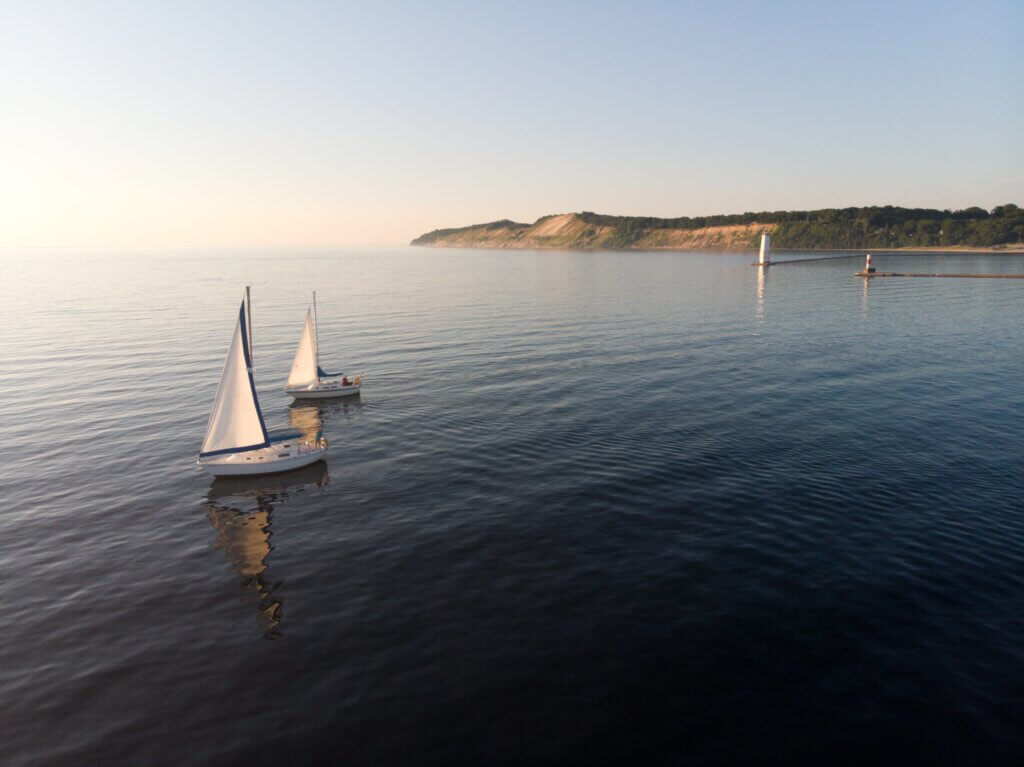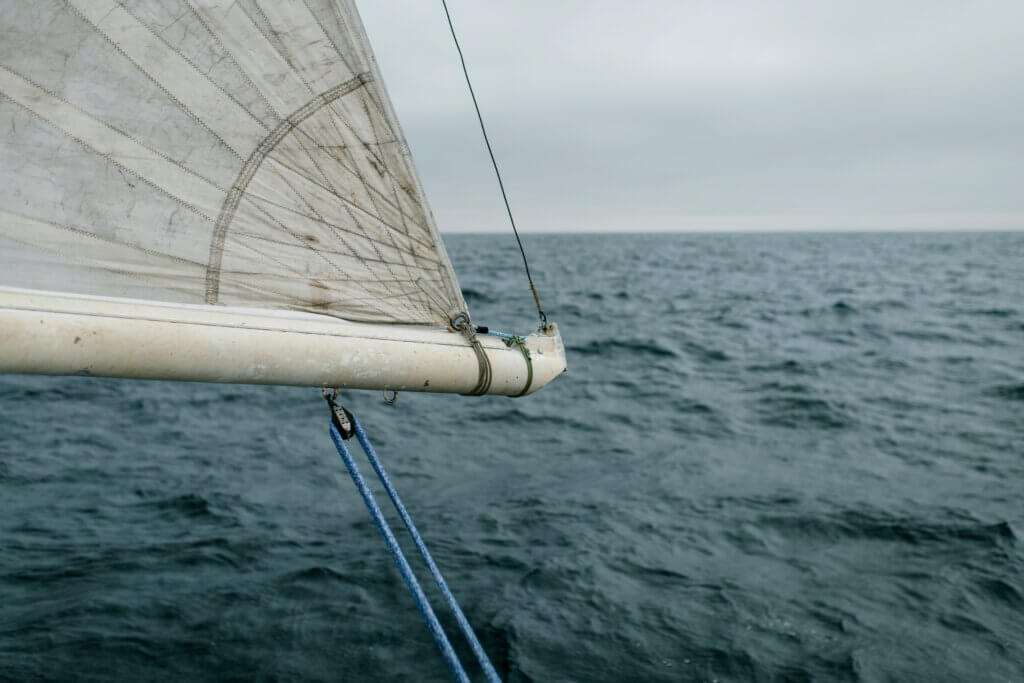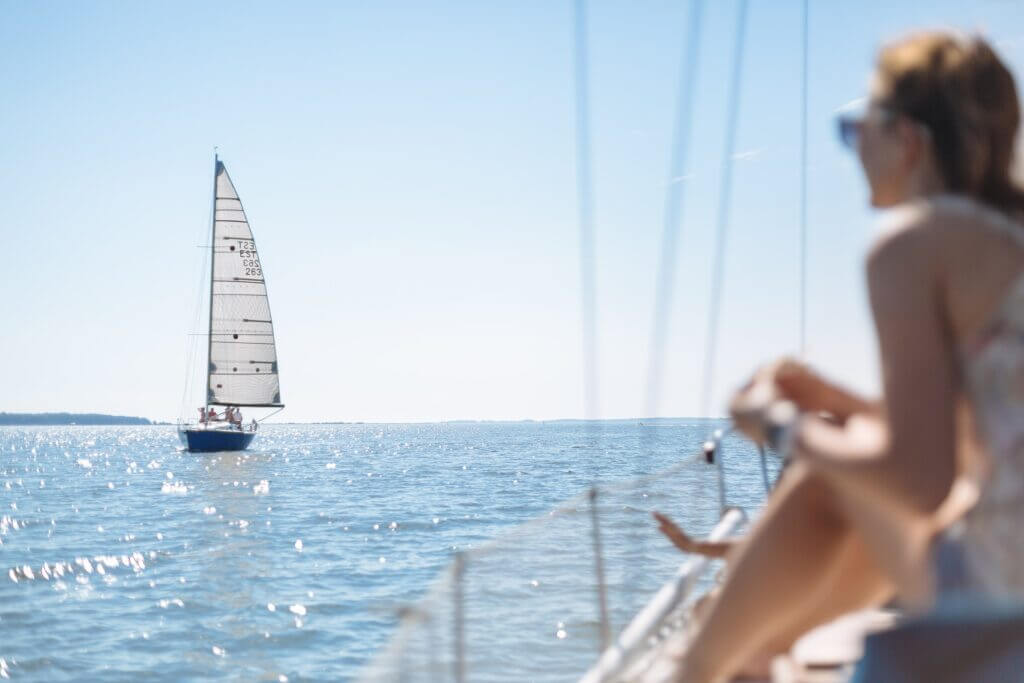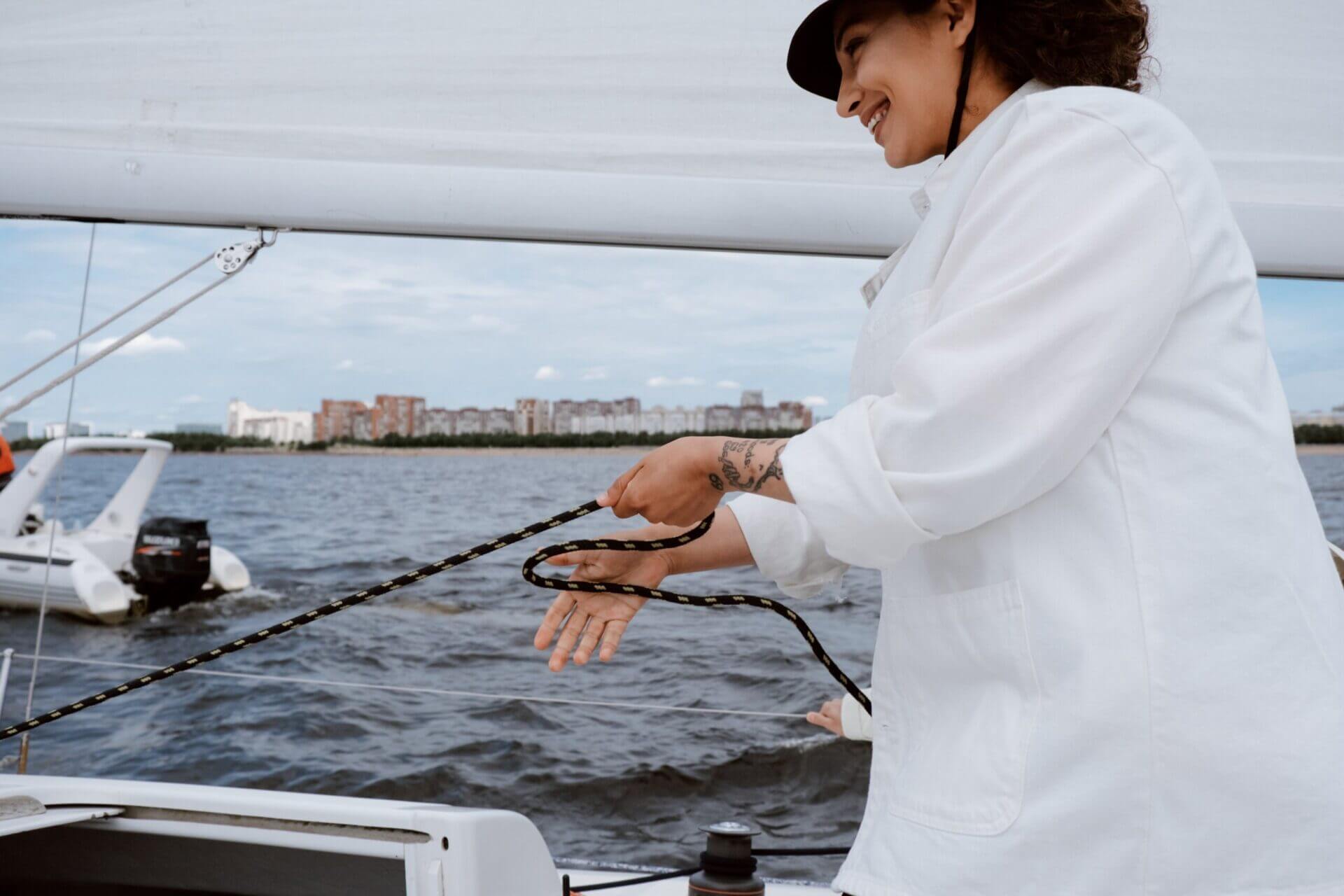13 Beginner Sailing Tips: Your Guide to Getting Started
Sailing can be an exhilarating experience, but for beginners, it can also be overwhelming. The thought of controlling a boat while being surrounded by water may seem daunting, but fear not, with the right knowledge and preparation, anyone can learn how to sail.
In this article, we will share some beginner sailing tips that will help you get started on your sailing journey. From choosing the right boat and location to learning basic sailing terms and safety practices, these tips will give you the confidence to set sail and enjoy your time on the water. So, let’s dive in and explore the world of sailing!
Beginner Sailing Tips
1. Choose a small boat rigged with one sail
Choosing a small boat rigged with one sail has many advantages for beginners learning how to sail. In addition to being easier to control and maneuver, a small boat also allows you to get a better feel for the boat as you make adjustments to the sail trim or steering. This is because small boats are more responsive to changes in sail trim and steering than larger boats, which can be slower to respond due to their size and weight.
By sailing a small boat, you’ll be able to develop your sailing skills more quickly and get a better understanding of how the boat responds to different conditions. So, if you’re just starting out, consider choosing a small boat rigged with one sail to help you get the most out of your sailing experience.

2. Choose calm, uncrowded waters
Another important tip for beginner sailors is to choose calm, uncrowded waters for your first few sailing trips. This will help you feel more comfortable and confident on the water, as you won’t have to navigate through busy areas or deal with choppy waves and strong currents. Look for sheltered bays, lakes, or rivers with minimal boat traffic to practice your skills in a safe and controlled environment.
As you gain more experience and confidence, you can then start to venture out into more challenging conditions. But for now, focus on finding calm, uncrowded waters that will allow you to focus on learning and enjoying the sailing experience.
3. Take instruction
Taking sailing instruction is another essential tip for beginners. While it may be tempting to simply jump in a boat and start sailing, proper instruction is crucial for learning the basics of sailing, including safety practices, sailing terminology, and sailing techniques. A certified sailing instructor can teach you everything you need to know to become a competent sailor and ensure that you’re following best practices for safety on the water.
Whether you choose to take a course at a sailing school or hire a private instructor, investing in sailing instruction is an important step in becoming a confident and knowledgeable sailor.

4. Go with someone who knows what they’re doing
In addition to taking sailing instruction, it’s also a good idea to go sailing with someone who has experience and knows what they’re doing. This could be a friend or family member who is an experienced sailor, or you could hire a skipper to join you on your sailing trip. Sailing with someone who is knowledgeable and experienced will not only make you feel more comfortable and safer, but it will also allow you to learn from their expertise and observe their sailing techniques.
This can be especially helpful if you’re just starting out and want to learn as much as possible about the art of sailing. So, don’t hesitate to reach out to more experienced sailors and ask if they would be willing to sail with you or offer some guidance. Sailing is a community-based activity, and most sailors are more than happy to help others learn and grow.
5. Know some basic sailing terms
Another important tip for beginner sailors is to learn some basic sailing terms. Knowing the terms for different parts of the boat and the various maneuvers involved in sailing will not only help you communicate with your crew, but will also make it easier for you to follow sailing instructions and understand sailing books and tutorials. Some basic sailing terms to learn include port and starboard (left and right sides of the boat, respectively), tack and jibe (turning the boat into the wind and away from the wind, respectively), and sheet (the line that controls the sail).
There are many online resources and books available that provide a comprehensive list of sailing terms and their definitions. Take the time to familiarize yourself with these terms, and you’ll be well on your way to becoming a proficient sailor.

6. Learn the traffic rules
Learning the traffic rules of the waterways is another important tip for beginner sailors. Just like on the roads, there are rules and guidelines that must be followed when sailing to ensure everyone’s safety. Some of the basic rules include giving way to boats on your right (the starboard side), yielding to larger vessels, and keeping a safe distance from other boats.
It’s also important to understand the various navigational aids, such as buoys and markers, which can help guide you safely through the waterways. Learning the traffic rules and navigational aids will help you avoid collisions and stay safe on the water. You can find information about the rules and regulations for boating in your area by consulting with local boating authorities or researching online. You can start out here
7. Research tide, wind and weather conditions.
Researching tide, wind, and weather conditions before setting out on a sailing trip is another important tip for beginner sailors. Understanding these conditions can help you plan your route and make informed decisions about when and where to sail. For example, knowing the direction and strength of the wind can help you determine the best angles for your sails and avoid dangerous gusts or currents. Likewise, understanding the timing and height of the tides can help you navigate through shallow or narrow channels without running aground.
Checking the weather forecast can also help you avoid potentially dangerous conditions, such as thunderstorms or high winds. So, be sure to do your research and keep an eye on the weather and water conditions before you head out on your sailing adventure. This guide can help you on what to look for before setting sail
8. Don’t forget to eat and drink before you go out
It’s also important to take care of yourself and your crew while sailing. Don’t forget to eat and drink before you go out on the water, and bring plenty of snacks and water on board to keep yourself hydrated and energized. Staying hydrated is especially important when sailing, as the sun and wind can quickly dehydrate you, leaving you feeling tired and lethargic.
It’s also important to protect yourself from the sun by wearing a hat, sunglasses, and sunscreen. Sunburn can be very uncomfortable and even dangerous, especially if you’re spending long hours out on the water. So, make sure to take care of yourself and your crew by staying nourished, hydrated, and protected from the sun.

9. Follow sailing basics for safety
Following sailing basics for safety is another important tip for beginner sailors. Before heading out on the water, make sure that your boat is properly equipped with safety gear, such as life jackets, flares, and a first aid kit. It’s also a good idea to let someone know where you’re going and when you expect to return, just in case of an emergency.
In addition, make sure that you’re familiar with basic safety procedures, such as how to handle emergencies like capsizing or running aground. Taking a safety course or sailing with an experienced captain can help you learn the ropes and feel more confident on the water. Remember, safety should always be your top priority when sailing.
10. Become familiar with sail control
Becoming familiar with sail control is another important tip for beginner sailors. Learning how to control the sails is one of the most fundamental skills in sailing, as it allows you to harness the power of the wind and maneuver your boat. There are a variety of different sail controls, including the mainsail and jib sheets, the halyards, and the boom vang.
Each of these controls plays a crucial role in shaping the sail and controlling the boat’s speed and direction. Taking sailing lessons or sailing with an experienced sailor can help you become more familiar with these controls and learn how to use them effectively. Remember, the more you know about sail control, the better you’ll be able to handle your boat and navigate through different wind and water conditions.
11. Be aware of the boom
The boom is the horizontal spar that extends from the bottom of the mast to the foot of the mainsail. It can swing from side to side when the boat changes direction, and if you’re not careful, it can hit you in the head or knock you overboard. To avoid accidents, it’s important to always keep a safe distance from the boom and be aware of its movements. You should also learn how to control the boom, either by using a boom vang or by manually adjusting the mainsheet.
Finally, it’s a good idea to always wear a safety harness or life jacket when sailing, in case you do accidentally fall overboard. By being aware of the boom and taking proper safety precautions, you can help prevent accidents and enjoy a safer and more enjoyable sailing experience.

12. One hand for you, one hand for the boat
This rule is a fundamental safety practice that can help prevent accidents and maintain your stability while sailing. Whether you’re adjusting the sails, moving around the boat, or simply enjoying the ride, it’s important to always have one hand free to hold onto the boat or grab onto something if you lose your balance.
This is especially important in rougher waters or when encountering unexpected gusts of wind. So remember, no matter how experienced you are as a sailor, always keep the “one hand for you, one hand for the boat” rule in mind to stay safe and in control while out on the water.
13. Practice as often as you can
Practice makes perfect, and this is especially true when it comes to sailing. The more time you spend on the water, the more comfortable and confident you’ll become in your sailing skills. So, as a final tip, make sure to practice as often as you can. This doesn’t mean you have to go out and buy your own sailboat – many sailing schools and clubs offer rental options or sailing excursions that you can join.
Take advantage of these opportunities and get out on the water as often as you can. You’ll not only improve your sailing abilities, but you’ll also have a chance to enjoy the beauty of nature and the exhilaration of sailing. With these beginner sailing tips in mind, you’re well on your way to a safe and enjoyable sailing experience. Happy sailing!

Beginner Sailing Tips: Conclusion
In conclusion, sailing can be a fun and exciting activity, but it’s important to approach it with the right mindset and preparation. By following the beginner sailing tips we’ve discussed, such as choosing a small boat rigged with one sail, practicing in calm and uncrowded waters, taking instructions, and becoming familiar with sail control, you can enjoy a safe and memorable sailing experience.
Remember to always prioritize safety and never hesitate to ask for help or advice from more experienced sailors. Whether you’re a seasoned sailor or a beginner, sailing offers a unique opportunity to connect with nature, challenge yourself, and create unforgettable memories. So, what are you waiting for? Grab your sailing shoes and set sail on your next adventure!
FAQs
Do I need to take sailing lessons before starting to sail?
While taking lessons can be helpful, it’s not strictly necessary. You can learn to sail by practicing with a more experienced sailor or by teaching yourself with instructional materials.
What should I wear when sailing?
Wear comfortable, weather-appropriate clothing that allows for freedom of movement. Make sure you have a hat, sunglasses, and sunscreen to protect yourself from the sun.
How can I find a sailing community or club?
Look for local sailing clubs or groups online, or check with your local marina or yacht club for information. Many sailing communities have events and races that are open to the public.
What kind of sailboat is best for beginners?
A small sailboat with a simple rig, such as a dinghy or a sunfish, is a good choice for beginners. These boats are easy to handle and can be sailed in a variety of conditions.
What should I do if I get caught in a sudden storm?
Stay calm and try to keep control of your sailboat. Reduce sail if necessary and head for the nearest safe harbor or anchorage. If you’re unable to do so, deploy an anchor and wait for the storm to pass.







